Discover 9 hidden attractions, cool sights, and unusual things to do in Kilmartin (United Kingdom). Don't miss out on these must-see attractions: Dunadd, Carnasserie Castle, and Kilmartin Glen. Also, be sure to include Temple Wood in your itinerary.
Below, you can find the list of the most amazing places you should visit in Kilmartin (Scotland).
Table of Contents
Dunadd
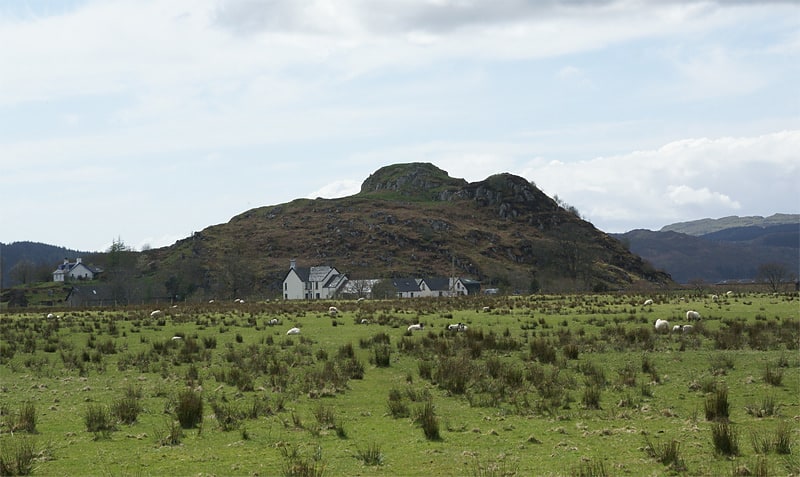
Fortress in Scotland. Dunadd is a hillfort in Argyll and Bute, Scotland, dating from the Iron Age and early medieval period and is believed to be the capital of the ancient kingdom of Dál Riata. Dal Riata was a kingdom, that appeared in Argyll in the early centuries AD, possibly after the Romans had abandoned Southern Britain and at the time when the Saxons were crossing the North Sea to counter incursions over Hadrian's Wall by the Picts and Dalriadan Scots.[1]
Carnasserie Castle

Historical place in Scotland. Carnasserie Castle is a ruined 16th-century tower house, noted for its unusual plan and renaissance detailing. It is located around 2 kilometres north of Kilmartin, in Argyll and Bute, western Scotland, at grid reference NM837009.[2]
Address: 2 miles north of Kilmartin of A816, Kilmartin
Kilmartin Glen
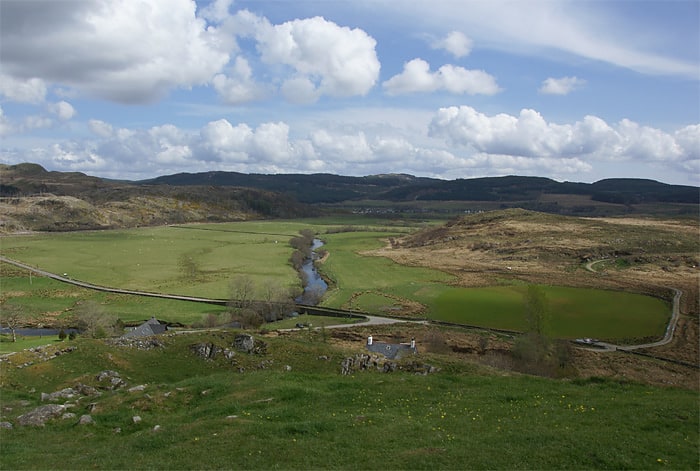
Kilmartin Glen is an area in Argyll north of Knapdale. It has the most important concentration of Neolithic and Bronze Age remains in mainland Scotland. The glen is located between Oban and Lochgilphead, surrounding the village of Kilmartin. In the village, Kilmartin Museum explains the stories of this ancient landscape and the people who dwelt there. There are more than 800 ancient monuments within a six-mile radius of the village, with 150 monuments being prehistoric. Monuments include standing stones, a henge monument, numerous cists, and a "linear cemetery" comprising five burial cairns. Several of these, as well as many natural rocks, are decorated with cup and ring marks.
The remains at Dunadd of the fortress of the Scots, a royal centre of Dal Riata, are located to the south of the glen, on the edge of the Moine Mhòr ("Great Moss"). Kilmartin Museum is located within the village itself and inspires and educates people by interpreting, explaining and conserving the internationally important archaeological landscape, artefacts, and natural heritage of Kilmartin Glen.[3]
Temple Wood

Temple Wood is an ancient site located in Kilmartin Glen, near Kintyre, Argyll, Scotland. The site includes two circles. The southern circle contains a ring of 13 standing stones about 12 metres in diameter. In the past it may have had 22 stones. In the centre is a burial cist surrounded by a circle of stones about 3 metres in diameter. Other later burials are associated with the circle. According to the Historic Scotland information marker at the site, the southern circle's first incarnation may have been constructed around 3000 BC.
The northern circle is smaller and consists of rounded river stones (which also fill the southern circle). In its centre is a single stone; another stone is found on the edge of the circle. This circle may have originated as a timber circle.
The name of the site originates in the 19th century (coinciding with the planting of trees around the circles) and has no relevance to the purpose of the site. It is located just south of the southern Nether Largie cairn. It is a designated scheduled monument.[4]
Address: 78 Lochgilphead, PA31 8QG Kilmartin
Ballymeanoch
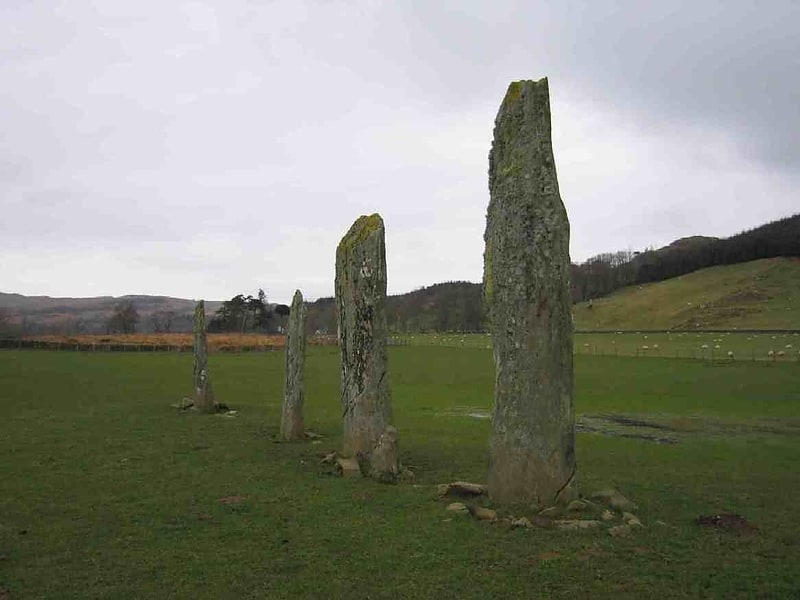
Ballymeanoch is a complex of neolithic structures located in Kilmartin Glen, Scotland.
It includes an avenue of two rows of standing stones with 4 and 2 stones each, a stone circle, and a henge with a small burial cairn. According to the Historic Environment Scotland marker at the site, the circle and standing stones are the older structures and their construction dates back to over 4000 years ago. The tallest stone is 4 metres (12 feet) height. The two middle stones of the four stone line are heavily carved with cup and ring marks. The complex is designated a scheduled ancient monument by Historic Environment Scotland.
The structures are located on a privately owned sheep farm but can be accessed via a series of paths that run between fences. The site is adjacent to the Dunchraigaig cairn for which there is a car park along the road.[5]
Kilmartin Stones

The Kilmartin Stones are a collection of 79 ancient graveslabs at Kilmartin parish church in the village of Kilmartin, Argyll, Scotland, about 30 km due south of Oban. The earliest stones date back to the thirteenth or fourteenth centuries, with the most recent ones dated 1707 and 1712.[6]
Kilmartin Castle
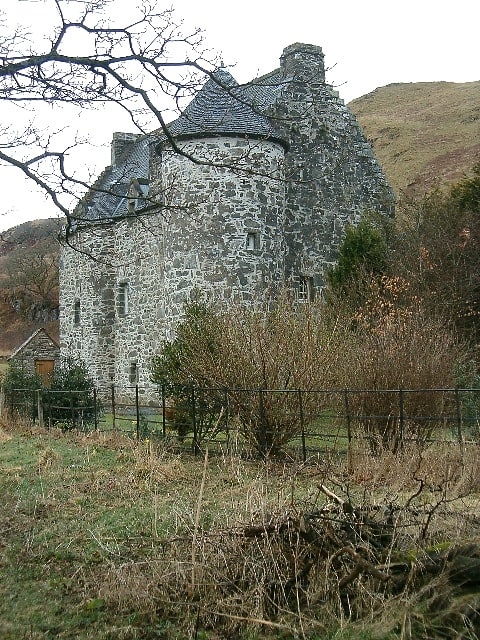
Kilmartin Castle is a 16th-century Z-plan tower house castle at Kilmartin, Scotland. Built by the Rector of Kilmartin and later owned by Clan Campbell. It was restored and refurbished as a bed and breakfast in the 1990s.[7]
Loch Craignish

Loch in the United Kingdom. Loch Craignish is a sea loch on the mid-Argyll coast.[8]
Aray Bridge
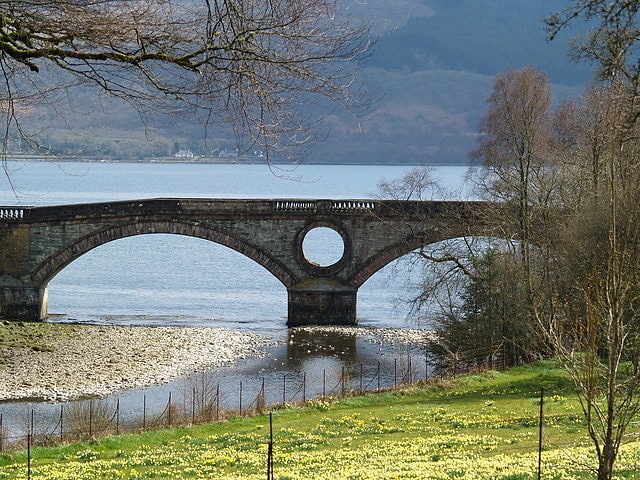
Bridge in Inveraray, Scotland. Aray Bridge, also known as Inveraray Bridge, is a stone two-arch public road bridge on the Inveraray Castle estate near Inveraray in Argyll and Bute, Scotland, carrying the A83 road over the mouth of the River Aray where it flows into Loch Fyne.[9]